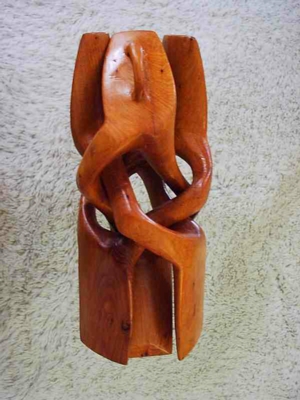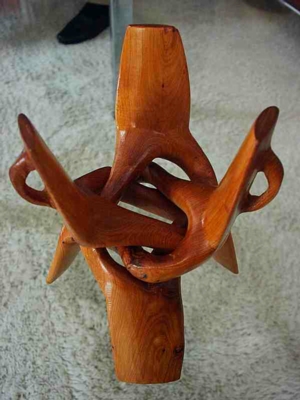African Borromean Rings
Here is a very fascinating and beautiful African object, a particularly intriguing interpretation of the Borromean Rings, yet probably rather common in African countries. The description and photographs are due to Jean Pradine.
In its folded position, the object has roughly the shape of the wooden log from which it has been carved out with such skill it is difficult to imagine, apparently without cutting and gluing, though it seems that there exists a technique allowing a line production by trained craftsmen.
The log is divided into three connected components associated by a 3-fold rotation symmetry, at least with a good approximation.

Each component is topologically a ring (neglecting a small handle), and may be very roughly described as the union of 3 rectangles, one in the median position which is hollowed out in ring shape, and two full ones, connected by one small edge to opposite vertices of the median one.
The median annular rectangle is set obliquely across the median third of the log, while the full rectangles are carved out from the external surface of the extreme thirds of the log. The 3 annular rectangles are linked by the Borromean link.
In the unfolded position, three of the full rectangles draw aside and become the legs of the tripod, the free small edges lying on the ground, and the three annular Borromean rectangles adopt a very stable more horizontal position forming a sort of seat able to support a heavy bowl or basin, which is now circled by the three other full rectangles, the whole figure being still invariant by 120 rotation.
© Mathematics and Knots/Edition Limitee 1996-2002
This material may be used freely for educational, artistic and
scientific purposes, but may not be used for commercial purposes,
for profit or in texts without the permission of the publishers.
